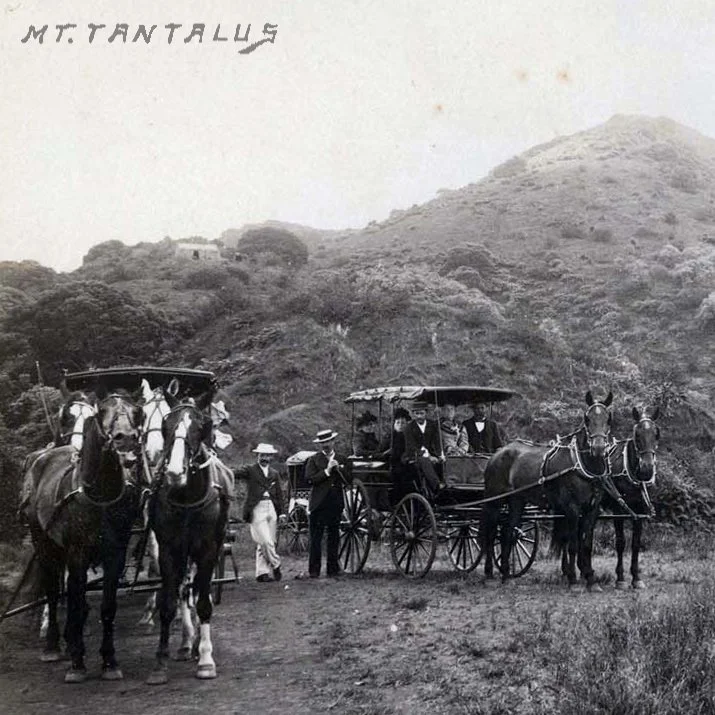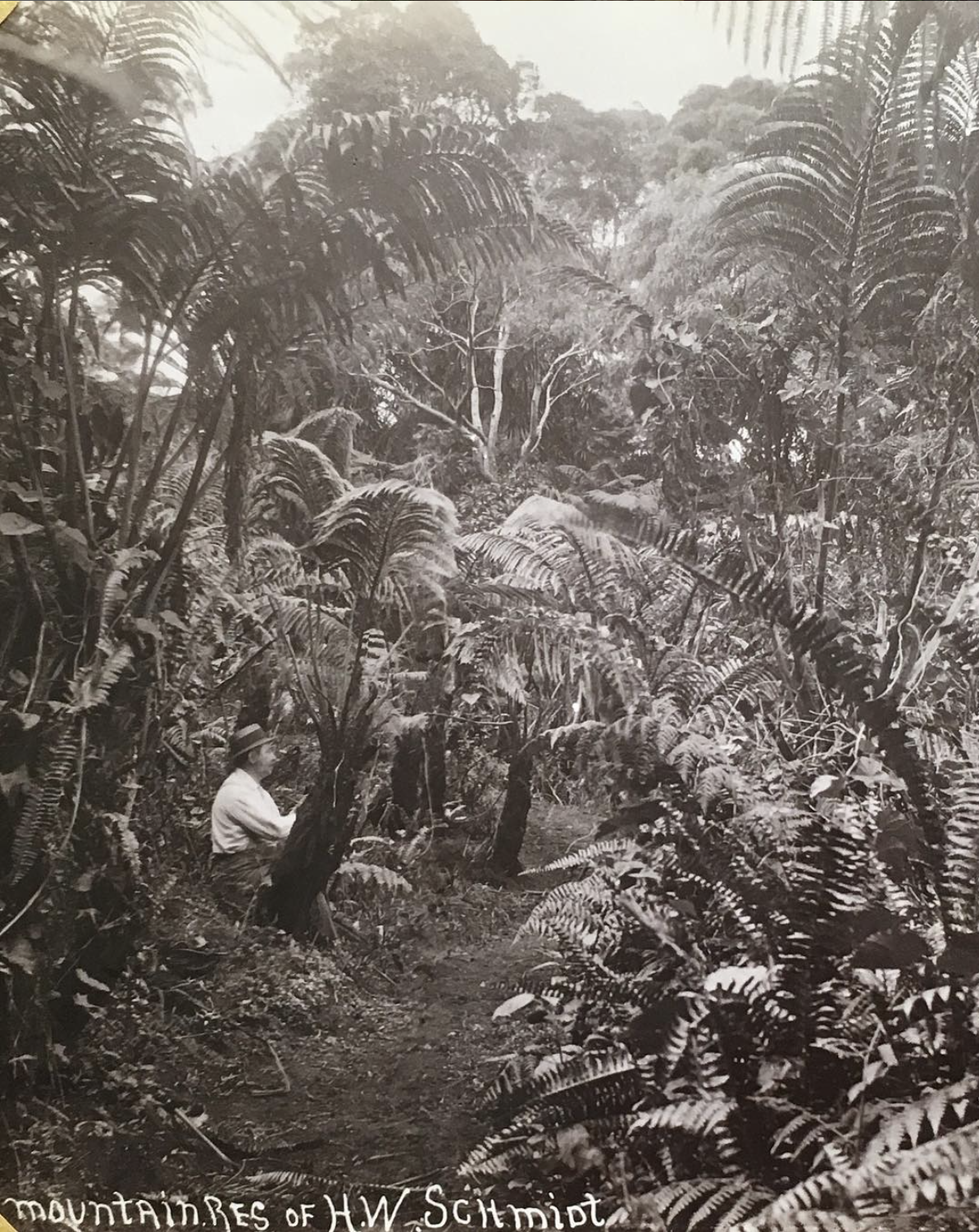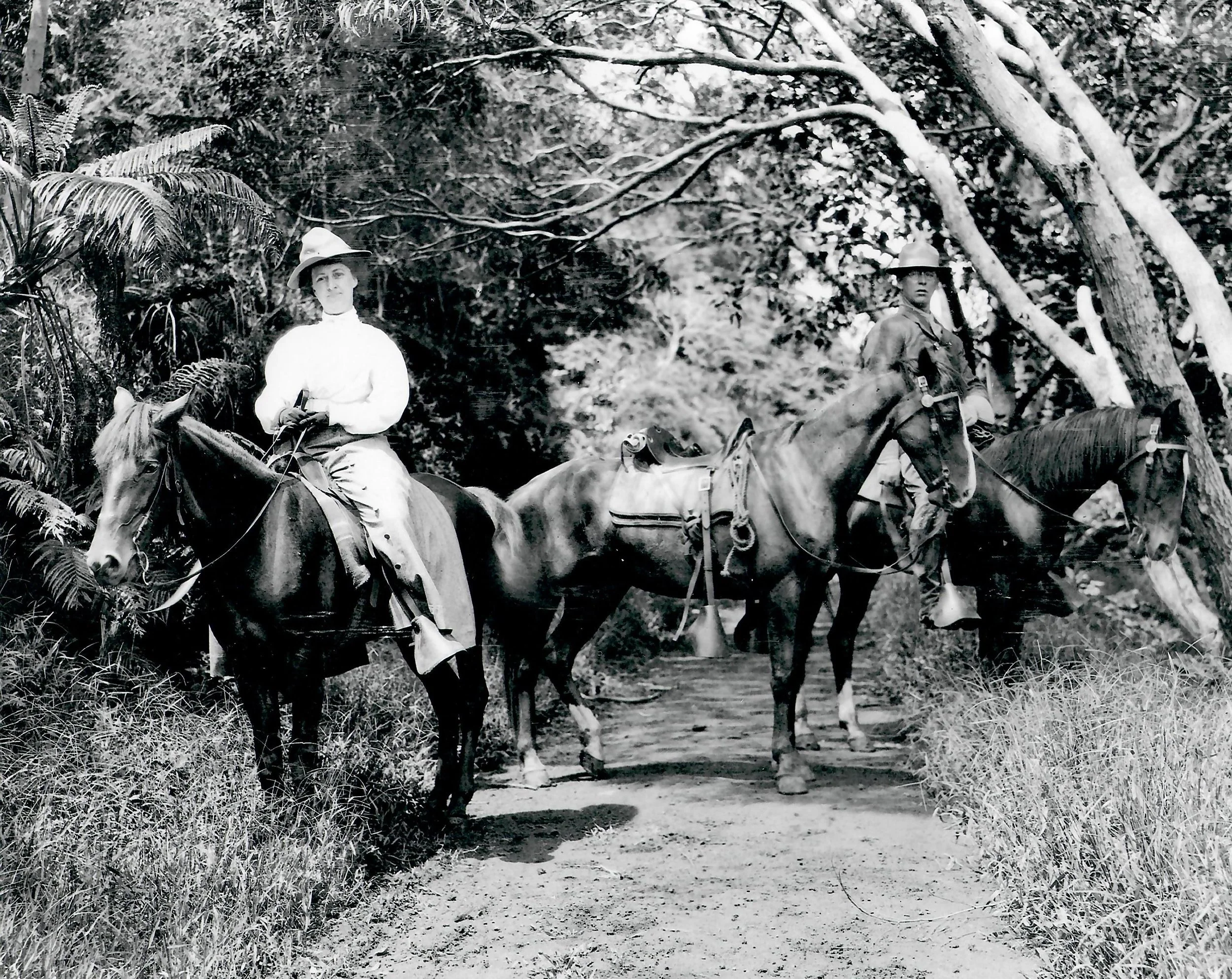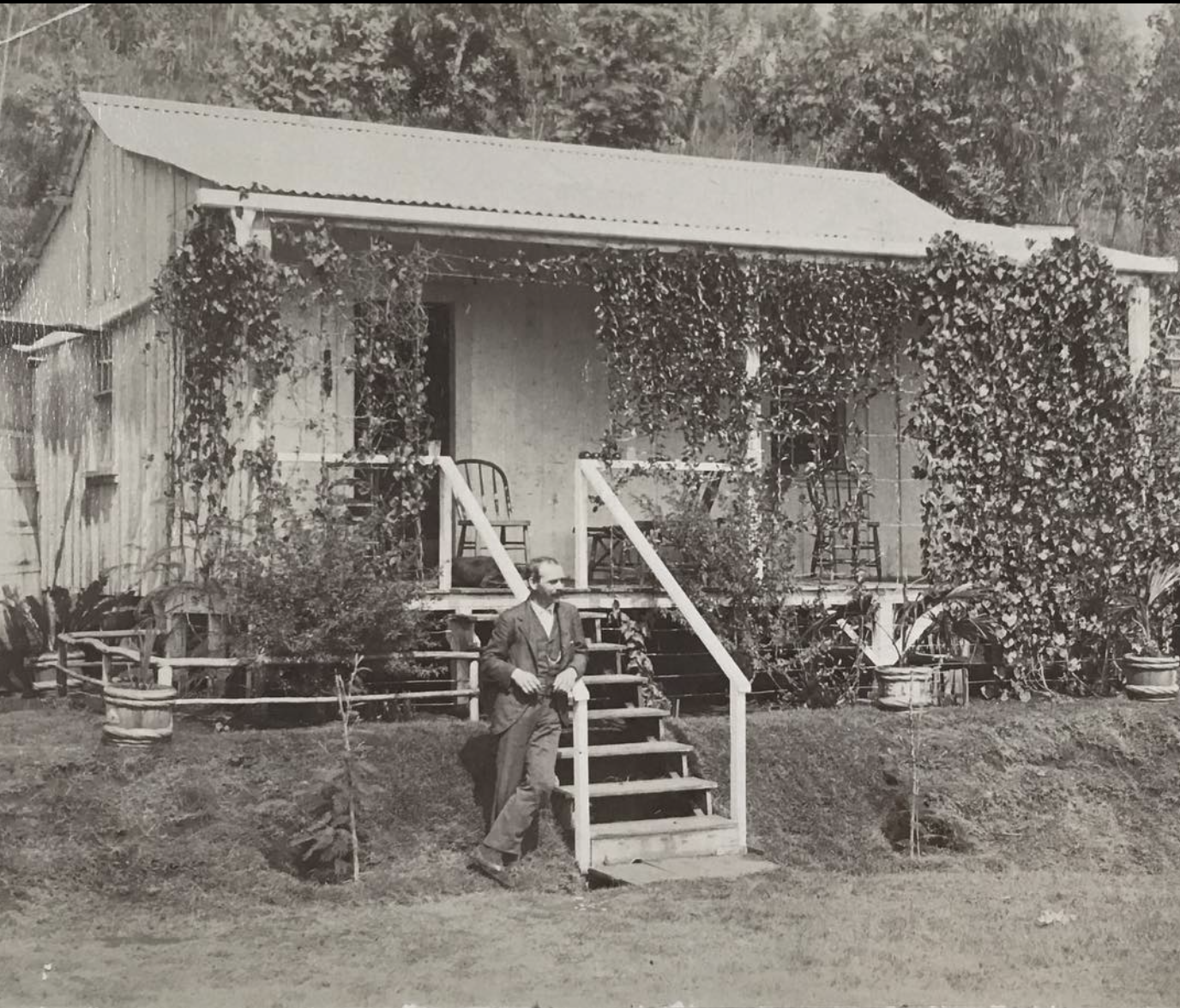This picture of the Scdmidt family was taken at the site of our current house by photographer C.J. Hedemann in September 1892, just four months before the illegal overthrow of the Hawaiian Kingdom. The timing likely explains why the Hawaii flag is upside down, a sea signal used to show when a ship is in distress. Rumor has it that H.W. Schmidt won the property in a poker game with King Kalakaua. After the king’s death and several months of negotiation, a deed was signed by Queen Liliuokalani. It shows Schmidt paid $285.24 for about 21 acres in 1891. Schmidt named the first house built on Tantalus Maluhia, meaning “peaceful or heavenly rest.”
Here we see the Wilder family and friends pausing for a photo near the top of Tantalus on the road to their summer house. Notice the small Hawaiian hale on the hill behind them — it's located on the area now known as Telephone Road. .
.
Before Western contact, this summit was a dense cloud forest reserved for the gods with only a few humans venturing up to catch birds. Just a few of the bird's brightly colored feathers would be plucked for royal wear before the native honeycreepers were released. .
.
By the time the carriage road in the photo was constructed, most of the mountainside had been deforested. After Westerns arrived in 1778, cattle and horses were introduced to Hawaii and quickly began to destroy the forest's understory. Humans did the rest, chopping down trees for the sandalwood trade and for fuel to render blubber for the whaling industry. .
.
By the late 1800s, most of the native forest was gone. The barren hillsides were starting to erode, which was contaminating the stream water and causing muddy runoff for all of Honolulu. .
.
In 1904, Ralph Hosmer was hired by the Territory of Hawaii to work on reforestation and preservation efforts. He planted exotic trees from Australia, Asia, and other parts of the world. Tantalus was later declared a Forest Reserve, and the area now serves as an important part of Honolulu's watershed. .
.
Tantalus is a great reflection of how humans can impact their environment from exploitation to conservation. We feel honored to continue the work to preserve this amazing space.
Here H.W. Schmidt sits in the midst of a native forest on his Tantalus property. We found this photo, which is from January 1896, in a handmade photo album at the Hawaii State Archives.
.
Schmidt was the first Western owner of the property where Tantalus Botanicals now resides. Rumor has it that Schmidt won the estate in a poker game with King Kalakaua. He then hiked all over the trails in the area with a surveyor, deciding what he wanted and naming the chosen hilltop Maluhia, meaning “peaceful.”
.
Schmidt took it upon himself to work on the reforestation of Tantalus, which had largely been cleared by sandalwood cutters and feral cattle. He planted many experimental crops and worked to preserve some of the ancient native forest that still exists here today.
.
Across Maluhia, Schmidt created terraced trails at 40-foot intervals along the slopes of the hillside, so that he and visitors could leisurely stroll the length of the estate. .
.
Many of these trails have been maintained over the years, but others have been swallowed by the jungle with wild boars being their only travelers. We have enjoyed unearthing these now overgrown paths to once again use them to explore and discover forgotten plants Schmidt left in the land.
In the late 1800s, the only way to reach the top of Mount Tantalus was by foot or horse. Known as the carriage road, it was a ten-mile trip from Punchbowl to the bottom of Round Top Drive. This meant that everyone who spent time on the mountain maintained a stable with horses, which sometimes included donkeys and mules. Of course, everyone had very strong legs too. The first automobiles were seen in Hawaii at the turn of the century, but it wouldn’t be until 1917 that Tantalus was turned into a gravel road, and then it was paved over in 1937.
When people visit our home, they often express surprise about how high up the mountain and faraway from everything it seems to be. While it may seem far from the city, can you imagine what it was like when people used to hike or ride horses to reach the top of Tantalus? .
.
This is a picture from the Hawaii State Archives taken in the early 1900s of what was known as the Half-way House, a general store for people spending their time on the mountain, where they would pick up ice, soda, and groceries.
.
Pictured in the foreground is David Haughs, the manager of the Half-way House and an influential nurseryman in charge of the selection, distribution and growing of new tree species for the Division of Forestry in the Territory of Hawaii. He is credited with the reforestation of Tantalus, although he inadvertently introduced some of the most invasive trees in Hawaii.
.
Back in the day, folks would stay in their cabins on Tantalus for weeks at a time, because it was hard to traverse the mountain, making it a summer retreat for people who wanted to avoid the hot Hawaiian summers. When they needed more supplies, they would head to the Half-way House located, obviously, about half-way up the mountain. .
.
Even though we now live in the era of free delivery and electric vehicles, it can still feel like we're living a million miles from civilization.




